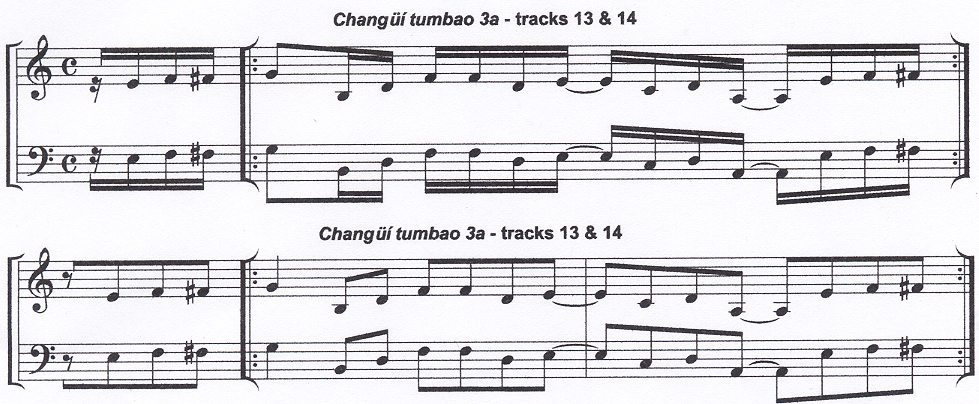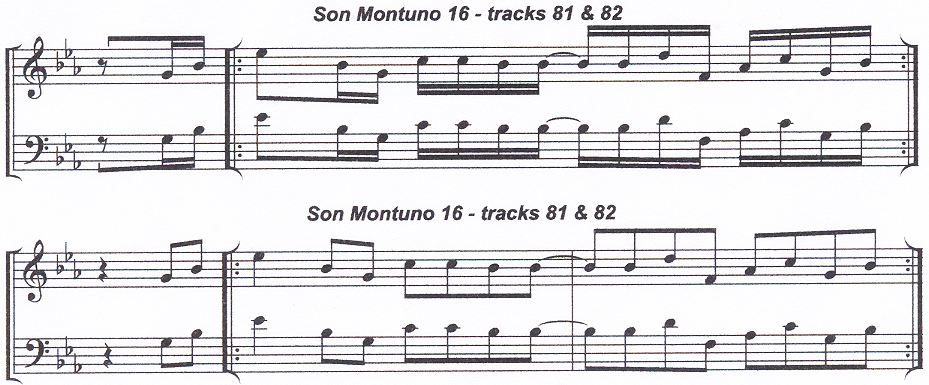Indice - Table of contents
New Stuff[hide]
Musicos: Dennis Nicles Cobas
Fotos: Eli Silva
Grupos: Ritmo Oriental : 1988 - Vol. IX - 30 a...
Musicos: Rafael Paseiro Monzón
Musicos: Jiovanni Cofiño Sánchez
Fotos: Tom Ehrlich : 2024 Monterey Jazz, P...
Resenas: Vacilón Santiaguero (Circle 9 ...
Staff: Bill Tilford
Fotos: Tom Ehrlich : 2024 Monterey Jazz, P...
Fotos: Tom Ehrlich : 2024 Monterey Jazz Fe...
Fotos: Tom Ehrlich : testing 123
Grupos: Pupy y los que S... : Discography - 1995- F...
Reportes: From The St... : Cubadisco 2...
Reportes: From The St... : Jazz Plaza ...
Photos of the Day [hide]
Kevin Moore - Beyond Salsa Piano - Vol. 1 Examples
Examples from Beyond Salsa Piano, Volume1
Chapter 1 discusses the concept of the tumbao -- explaining what it is and following its development from its African origins through the various Cuban genres of the 20th Century to its integral role in rock, soul, jazz and funk.
Chapter 2 covers changüí, the first genre to use tumbaos on instruments other than pitched drums. Changüí tumbaos, or guajeos, are played on the tres, making them ideal material for beginning pianists.

Each tumbao is shown in 16th note and 8th note notation, with two audio files, one at full speed and one in slow motion. The left and right hand parts are panned hard left and right respectively so you can use the balance control to learn each hand separately by ear if you don't read music. Even if you do read music, we suggest learning them by ear if you have the patience, and only using the music to check your results. If you learn it by ear, you "own it".
Later in Chapter 2, we cover kiribá and nengón, two very easy genres which pre-date changüí.
Chapter 3 discusses rumba, which, although it doesn't use tumbaos, is essential to mastering the feel of Cuban music.
Chapter 4 contains several tumbaos derived from danzón violin parts from the 1920s and Chapter 5 deals with very easy son tres guajeos from the 1920s and 1930s.
Chapter 6 on son montuno, is the longest section of Volume 1. It can be thought of as a pianist's companion to my online book on the bass tumbaos of Arsenio Rodríguez between 1940 and 1951.

Volume 1 also contains an extensive appendix on clave and rhythmic terminology.





















